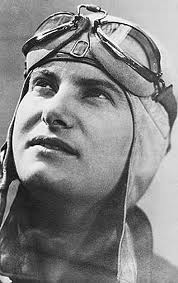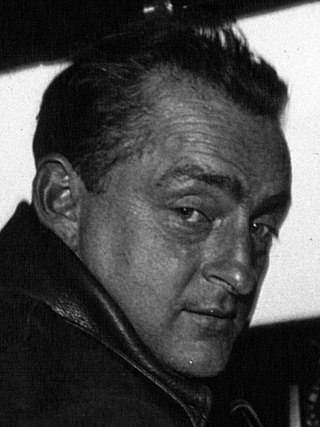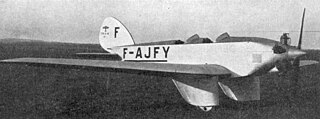Marie André Marcel Riffard was a French aeronautical engineer. He designed fighter aircraft and air racers, as well as airplanes for postal delivery and medical transport. He also designed racing cars and land-speed record cars for Panhard and Renault. Riffard has been called the "Father of modern aviation".

The Caudron C.450 and C.460 were French racing aircraft built to participate in the Coupe Deutsch de la Meurthe race of 1934.

Hélène Boucher was a well-known French pilot in the early 1930s, when she set several women's world speed records and the all-comers record for 1,000 km (621 mi) in 1934. She was killed in an accident in the same year.

The Caudron C.230 was a sporting, touring and trainer aircraft produced in France in 1930. It was a conventional biplane with single-bay, unstaggered wings of equal span. The pilot and a single passenger sat in tandem open cockpits. It featured a wooden fuselage with plywood skin.

Commandant Maurice Albert Alfred Jean Arnoux was a French World War I flying ace credited with five aerial victories. After the end of the First World War, he continued his aviation career during the 1930s as an air racer and aviation record setter until the Second World War. He returned to flying fighter planes during the early days of World War II, but was killed in action in 1940.
The Renault 4P, also called the Renault Bengali Junior, was a series of air-cooled 4-cylinder inverted inline aero engines designed and built in France from 1927, which produced from 95 hp (71 kW) to 150 hp (110 kW).

The Potez VIII was a French training aircraft which first flew in 1920. Originally it had a very unusual vertical inline engine and a four-wheeled undercarriage, though the production version was more conventional.

The Caudron C.362 and the almost identical C.366 were single-seat racing aircraft built in 1933 by Caudron to compete in the Coupe Deutsch de la Meurthe competition.

The Caudron C.180 was an all-metal, three-engine French ten-seat passenger aircraft, flown about 1930. Only one was built.
The Bloch MB.90 was the first all-metal French light aircraft. Only two aircraft were completed, making their first flights in 1932, though there were several variants.

The Caudron C.430 Rafale was a fast, two seat French touring monoplane. Soon after its first flight in 1933 it set an international class speed record.

The Caudron C.27 was a French biplane, a two-seat basic trainer which also competed successfully in the 1920s.
The Caudron C.91 was a French single engine biplane with an enclosed passenger cabin seating four. It first flew in 1923.

The Caudron C.39 was a French three-engined biplane with a cabin for six passengers when the aircraft was equipped as a landplane or four passengers when on floats. It was flown with some success in competitions in 1920 and 1921.

The Caudron Type O was a French single seat air racing biplane first flown in 1914.

The SFCA Maillet 20 was a French three seat tourer built in 1935. The Armée de l'Air ordered 30 for training and liaison and several were raced. The aircraft was developed through 1935 via cockpit layout and canopy changes to the provision of retracting landing gear.

The SFCA Lignel 20 was a French, single engine, low wing monoplane, one of a series of this type built by SFCA in the 1930s. It was capable of aerobatics but was primarily a racing aircraft.

The Albert A-60 was a single engine, two seat, wooden sports monoplane designed and built in France in the early 1930s. Two were built and flown with three different engines.
The Caudron C.580 was a French advanced trainer aircraft intended to prepare pilots for the new low wing monoplane fighters of the mid-1930s. It did not go into production and only two were built.
The Caudron C.860 was a single engine, single seat monoplane ordered by the French government as a long distance communications aircraft. First flown in 1938, it was also expected to set speed and altitude records but the outbreak of World War II ended developments.














